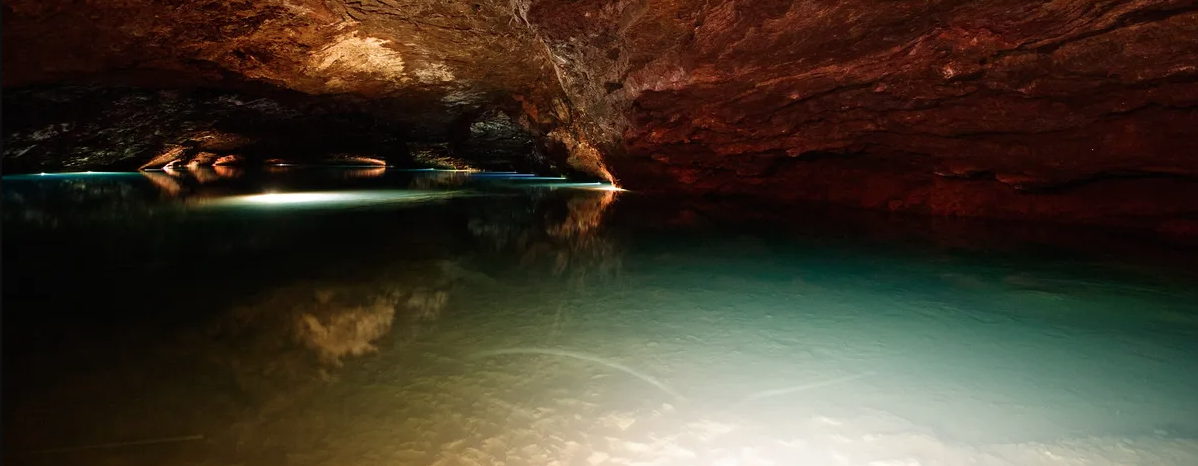Divers have tried to find the end of the lake in Craighead Caverns, but all attempts have failed.
Deep beneath an unassuming corner of Tennessee, you can find America’s “Lost Sea”: the largest non-subglacial underground lake in the US, and likely the second largest in the world. Found in Craighead Caverns, this colossal body of underground water is so large that no one’s actually sure how big it is.
It's located amidst the Great Smoky Mountains of Tennessee between Sweetwater and Madisonville. Along with holding a vast amount of water, the cavern is known for the array of crystals, stalagmites, and stalactites that decorate its limestone walls.
The cave system has a long history and is considered a National Natural Landmark by the National Park Service.
Long before humans were here, there’s evidence that the cave was once stalked by fearsome (albeit very lost) giant Pleistocene jaguars. Centuries later, it was used by the Cherokee as a shelter, as shown by the many Native American artifacts – including pottery, arrowheads, weapons, and jewelry – discovered here.

Craighead Caverns is home to some impressive geology too. Image credit: Jay Williams/Flickr (CC BY-NC-SA 2.0)
In more recent centuries, early European colonists stored potatoes here and the cave was later mined by Confederate soldiers for saltpeter to make gunpowder. Moonshiners are also said to have hidden their illegal hooch supplies in the cave during the Prohibition Era.
However, the “lost lake” was discovered in 1905 when a kid stumbled across the water while playing in the cave.
"The lake was discovered by Ben Sands," Tour guide Savannah Dalton told CBS News in 2019. "A 13-year-old boy who had actually crawled through a tunnel that was the size of a bicycle tire for 40 feet before he dropped down into the lake itself and actually waded out into about knee-deep water. It was a lot smaller when he came through. But we've blasted it out since."
As for the size of this thing, no one is quite sure. The visible portion of the lake is 243 meters (800 feet) long by 67 meters (220 feet) wide, but beneath the surface, it leads into other huge halls filled with water – many of which are yet to be explored.
Over 13 acres (5.2 hectares) of water have been mapped so far, although explorers have still not found the end of the lake. One diver swam through the lake’s pitch-black waters armed with a sonar device and was forced to turn around since they could detect nothing but water all around them.
So, while the Lost Sea is said to be the second largest non-subglacial underground lake – beaten only by the Dragon's Breath Cave in Namibia – who's to know whether this mysterious cavern could be the true record holder?
An earlier version of this article was published in August 2022.




Recommended Comments
There are no comments to display.
Join the conversation
You can post now and register later. If you have an account, sign in now to post with your account.
Note: Your post will require moderator approval before it will be visible.